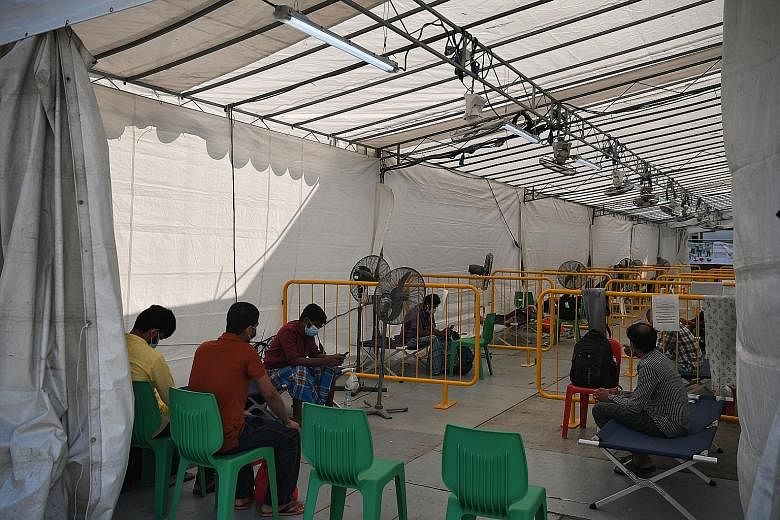Although migrant worker dormitories with a lower prevalence of Covid-19 were cleared first, this does not mean that those in dorms with more cases were not taken care of, the Health Ministry's director of medical services Kenneth Mak said yesterday.
"There is a difference between testing for clearing the dorm versus testing to make sure that all people who have infections are properly looked after and treated," he said during a virtual press conference yesterday.
Those who had acute respiratory infections or were at higher risk of being infected, such as older workers, were properly looked after, with measures including pulling them out of dorms, added Associate Professor Mak.
He was responding to a question on whether the strategy to clear dorms with fewer cases first had put more workers at risk.
About 94 per cent of the 47,453 confirmed Covid-19 cases in Singapore as of yesterday are dorm residents.
Prof Mak said it was easier to clear dorms with a lower prevalence of the virus first, and that this was part of the inter-agency task force's clearing strategy. "However, now that we have cleared quite a number of the migrant workers living in these dormitories, we are coming to the dormitories with higher prevalence, and they take a little bit longer to clear," he said.
In response to why the clearance process is taking so long, Minister for National Development Lawrence Wong said efforts to clear the dorms constitute a "massive undertaking".
Some workers had to be moved out of the dorms and others kept within because they were not cleared of the virus yet, he said.
Mr Wong added that testing workers in dorms is not a straightforward process. If everyone tests negative in a block, then the entire block can be cleared, but "this has not happened", he said.
"Neither has it been the case that everyone tests positive because the safe distancing measures do help to slow down the spread of the virus. But that also means that every time you go into a block, you end up with a certain percentage that are positive, a certain percentage who test negative."
"To deal with that, you have to restart sometimes the process of isolating the workers, another 14 days of isolation, and then it repeats block after block after block across multiple dormitories, across 300,000 workers," he said.
"It is quite a massive undertaking and to be able to complete this very soon, I think it is credit to the hard work of everyone who has been serving on the front line. We would not have been able to do it without all their sacrifices."
Health Minister Gan Kim Yong also said that even if a worker has tested negative, he would still have to be observed for the next 14 days. The worker would have to be tested again because he might be asymptomatic.
"And if it turns out positive, then you have to go backwards, trace back again to see when was he infected, whether there were other close contacts that you need to ring-fence, you need to quarantine. So, it is quite a protracted process," said Mr Gan, adding that a combination of isolation, serology and polymerase chain reaction tests is used to effectively clear everyone.
At the same time, the dorms need to have no infections so workers do not get reinfected when they return, he said.
"So, I think it is important for us to understand that actually it is a systematic way and quite an extensive process that we need to go through to ensure that all 300,000 workers are cleared of this infection and are able to return to work," said Mr Gan.












